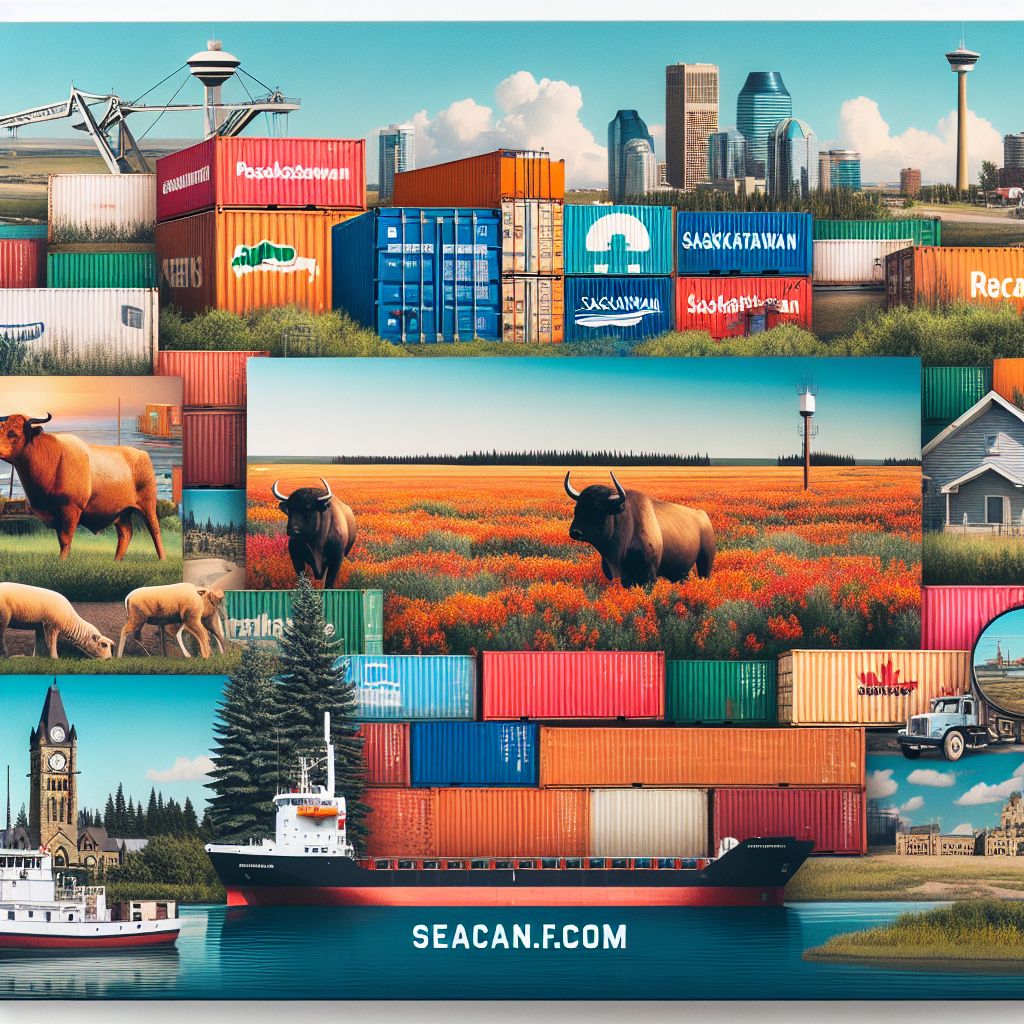Main Points
- Shipping container homes is legal in Saskatchewan but must meet local building codes and zoning regulations.
- Each municipality has unique zoning laws affecting where and how container homes can be built.
- Building permits are necessary and often require structural integrity assessments and compliance with
standards. - Insulating shipping container homes for Saskatchewan’s cold winters can be difficult and expensive.
- It is crucial to consult with local authorities to understand each area’s specific rules and regulations.
Can I Legally Build A Shipping Container Home In Saskatchewan?
Summary of Legal Issues
Shipping container homes have become popular worldwide as a cost-effective and environmentally friendly alternative to traditional homes. However, their legality varies by location, and there are specific considerations in Saskatchewan.
My Favorite Container Homes Resource
I compared the top 3 Container Home Guides
to discover the ultimate resource!
See my top recommendation here
Saskatchewan’s Legal System
Standards and Building Codes
In Saskatchewan, the National Building Code of
The building code addresses several elements of construction, including structural soundness, fire safety, plumbing, and electrical systems. Certain areas, such as structural modifications, insulation, and ventilation, need particular attention to comply with the code when it comes to shipping container homes.
City-Specific Zoning Rules
In Saskatchewan, zoning rules are determined by the city, and these laws influence where and how you can build a shipping container home. Some towns may limit the kinds of buildings you can put in residential areas, while others may have specific rules for unconventional housing options.
Take Moose Jaw as an example. They’ve proposed a bylaw to ban people from living in shipping containers and to limit where they can be placed. It’s crucial that you check with your local municipality to understand the specific zoning laws that will affect your project.
What You Need to Know About Licensing and Permits
How to Get a Building Permit
If you plan to build a shipping container home in Saskatchewan, you’ll need a building permit. This involves sending in detailed plans and specs to your local building authority and waiting for them to give you the go-ahead.
- Prepare detailed architectural and engineering plans.
- Submit the plans to the local building authority for review.
- Address any feedback or required changes from the building authority.
- Obtain the necessary permits once the plans are approved.
Most importantly, ensure your plans comply with the National Building Code of Canada and local regulations to avoid delays and additional costs.
Assessing the Structure
Assessing the structure is critical in building a shipping container home because changing the containers can compromise their stability. This assessment ensures the structure can handle the weight and pressure it will face.
It is a good idea to hire a skilled engineer to carry out these inspections. They will examine any alterations made to the container, such as creating spaces for windows and doors, and suggest ways to strengthen the structure if needed.

Meeting Insulation and Safety Standards
When building a shipping container home in Saskatchewan, insulation is one of the most important factors to consider. The winters in this province can be pretty cold, and without the proper insulation, a container home can quickly become unlivable. Insulating a metal container can be tricky, as metal is a better conductor of heat and cold than most traditional building materials.
The National Building Code in Canada mandates that all homes meet specific energy efficiency standards, including insulation. You’ll need to use top-notch insulation materials and methods to meet these standards. You can use spray foam insulation, rigid foam panels, or a combination of the two to get the R-value you need.
In addition to insulation, other safety standards need to be met. These include proper ventilation to avoid condensation and mould, fire-resistant materials, and electrical and plumbing codes. Meeting these standards ensures compliance with regulations and a safe and comfortable living environment.
Obstacles and Thoughts
Constructing a shipping container residence in Saskatchewan has its obstacles and thoughts. Understanding these can help you better prepare and navigate the building process.
- Insulating for the Cold Climate of Saskatchewan
- Complying with Local Building Code Standards
- Implications of Cost
Insulating for the Cold Climate of Saskatchewan
Careful planning and execution are required when insulating a shipping container home for the cold climate of Saskatchewan. Metal containers are susceptible to condensation, which can lead to mold and rust if not properly handled. As a result, it’s critical to use high-quality insulation materials and methods to create a barrier against the cold.
Spray foam insulation is a popular choice for container homes because it creates a seamless barrier that sticks to the metal walls. Another viable option is rigid foam panels, which offer high R-values and are easy to install. However, keep in mind that these materials can be expensive, so make sure to plan your budget accordingly.
Adhering to Local Building Code Regulations
Adhering to local building codes is necessary when building a shipping container home in Saskatchewan. These codes are in place to make sure your home is safe, long-lasting, and conserves energy. You’ll need to provide comprehensive plans and specifications to the local building authority to adhere to these regulations for approval. For those considering storage options, you might find shipping container self-storage units functional as a temporary solution.
Hiring a professional architect or engineer can help ensure your plans follow the National Building Code of Canada and any local rules. They can also help check the structure’s strength, plan for insulation, and handle other technical aspects of the project. Consider shipping container self-storage units if you need storage solutions during your project.
Financial Considerations
While constructing a home from shipping containers can be less expensive than traditional home construction, it’s essential to consider all possible costs. The expense of buying and altering shipping containers, insulating them for Saskatchewan’s weather, and complying with local building codes can accumulate.
Here’s a table to give you an idea of the potential costs involved:
| Item | Estimated Cost | Notes |
|---|---|---|
| Shipping Container | $2,000 – $5,000 | Depends on size and condition |
| Insulation | $3,000 – $7,000 | Spray foam or rigid foam panels |
| Structural Modifications | $1,000 – $3,000 | Windows, doors, reinforcements |
| Building Permits | $500 – $1,500 | Varies by municipality |
| Labor | $5,000 – $10,000 | Depends on complexity |
Case Studies and Local Examples
Let’s examine some case studies and local examples to better understand the practical aspects of building a shipping container home in Saskatchewan. These real-life stories can provide valuable insights and inspiration for your project.
| Aspect | Details |
|---|---|
| Legal Status | Shipping container homes are legal in Saskatchewan, but they must comply with local zoning and building regulations. |
| Building Codes | Homes must meet the National Building Code of Canada (NBC) standards and local amendments. |
| Zoning Regulations | Zoning bylaws vary by municipality; some may restrict the use of shipping containers for residential purposes. |
| Permitting Process | A building permit is required; homeowners should consult with local authorities before construction. |
| Community Acceptance | Acceptance of shipping container homes may vary; some communities embrace them for affordability, while others may resist due to aesthetic concerns. |
Reference:
https://publications.saskatchewan.ca/#/categories/746
Successful Shipping Container Homes in Saskatchewan
A local architect in Saskatoon is a shining example of how to build a shipping container home that meets all local building codes and zoning regulations. He designed his home using three shipping containers, which he modified to create a spacious and energy-efficient living space.
This home features top-notch insulation, energy-saving windows, and a cutting-edge HVAC system to keep you comfortable all year round. The architect also included eco-friendly design features like a green roof and rainwater collection system.
Construction Difficulties
The Saskatoon project succeeded in the end, but not without its fair share of obstacles. One of the primary problems was getting the containers insulated enough to satisfy Saskatchewan’s climate R-value requirements. The architect decided to use spray foam insulation, which created a flawless barrier but increased the total cost.
Another hurdle was securing the requisite construction permits. The local construction authority demanded comprehensive plans and evaluations of structural integrity, which necessitated time and resources to compile. Nevertheless, by collaborating closely with local authorities and employing competent professionals, the project was able to comply with all regulatory standards.
Wrapping Up
Constructing a shipping container home in Saskatchewan is feasible, but it demands meticulous preparation and adherence to local rules. Grasping the legal structure, securing the required permits, and meeting insulation and safety norms are essential. For more information on storage options, check out shipping container self-storage units.
When looking into this different housing option, you must contact local officials and hire experienced professionals to ensure your project goes well. This way, you can build a home that’s not unique, affordable, environmentally friendly, and ideally suited to your needs. For more information, you can read about the new regulations for shipping containers in Saskatchewan.
Key Takeaways
You can legally build a shipping container home in Saskatchewan but must follow local building codes and zoning regulations. Each municipality has its rules, so checking with local authorities is essential. You will need to obtain a building permit, which involves submitting detailed plans and meeting structural integrity and insulation standards. Insulating for Saskatchewan’s cold winters can be difficult and expensive. It can be helpful to consult with local experts and professionals to navigate these requirements successfully.
Tips for Future Home Builders
If you’re considering constructing a shipping container home in Saskatchewan, your first step should be looking into the local building codes and zoning regulations. Prepare comprehensive plans and work with certified architects and engineers to guarantee compliance. You should also set aside money for insulation and structural changes to meet the National Building Code of Canada. Always get all the required permits before building to prevent legal problems. Lastly, always check with local authorities and experts to ensure your project is safe, follows the rules, and thrives.

Questions You Might Have
These are some common questions about constructing homes from shipping containers in Saskatchewan.
What are the main challenges when constructing a shipping container home in Saskatchewan?
The main challenges are complying with local building codes and zoning laws, getting the required permits, making sure the home is structurally sound, and insulating it for the cold Saskatchewan climate. Each of these steps requires careful planning, professional help, and compliance with certain standards.
Are shipping containers allowed as temporary housing?
“Shipping containers can be used for temporary purposes like storage during construction without needing a permit. But, if you want to use them for permanent residential use, you typically need a building permit and must follow building codes and zoning laws.”
Shipping containers temporarily for storage or during construction is usually allowed without a permit. But, if you want to use them as a permanent residence, you must get a building permit and follow local building codes and zoning regulations. This ensures that the structure is safe and meets all necessary standards.
Can you afford to build a container home in Saskatchewan?
Building a home out of shipping containers can be cheaper than building a regular house, but there are many costs to consider. The price of buying and changing shipping containers, making them suitable for Saskatchewan’s weather, and following local building rules can all add up.
While the initial cost of purchasing a shipping container may be relatively low, the additional expenses for insulation, structural modifications, permits, and labor can increase the overall cost. Therefore, it’s essential to budget carefully and consider all potential expenses before starting your project.
What insulation is needed for container homes?
Insulating a shipping container home for the frigid Saskatchewan climate requires careful thought and action. The National Building Code of Canada stipulates that all homes must meet specific energy efficiency standards, including insulation.
Several ways to insulate a shipping container home include spray foam insulation, rigid foam panels, or a combination of both. Spray foam insulation creates a seamless barrier that sticks to the metal walls, and rigid foam panels provide high R-values and are easy to install. Both options can be expensive, so planning your budget is essential.







Leave a Reply